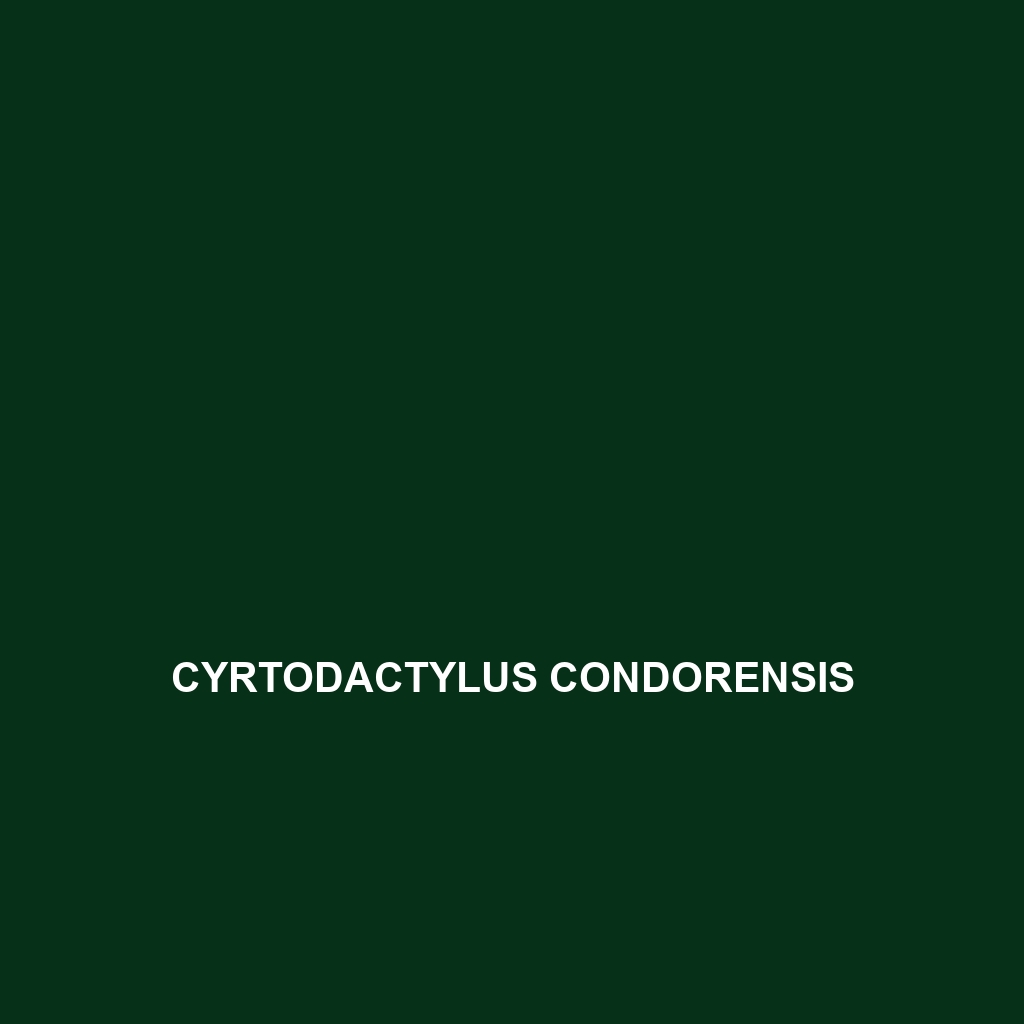Common Name: Cyrtodactylus condorensis
Scientific Name: Cyrtodactylus condorensis
Habitat:
Cyrtodactylus condorensis is primarily found in the limestone karst forests of the Central Highlands in Vietnam. This species thrives in humid tropical environments, specifically within the limestone formations that provide shelter and hunting grounds. The unique geological features of its habitat are crucial, offering both protection and a rich diversity of prey.
Physical Characteristics:
This gecko species typically ranges from 10 to 15 centimeters in length. Cyrtodactylus condorensis exhibits a distinctive color pattern, characterized by sandy yellow to light brown hues with dark brown spots and bands, which aid in camouflage against the rocky terrains. Its elongated body, robust limbs, and large adhesive toe pads enable excellent climbing abilities, making it adept at navigating its rocky environment.
Behavior:
Cyrtodactylus condorensis is primarily nocturnal. During the night, it can be seen foraging for food and basking on warm rocks. Its behavior includes territorial displays and elaborate courtship rituals during the mating season. This gecko is known for its ability to remain motionless, blending seamlessly into its surroundings, a behavior that aids in avoiding predators.
Diet:
The diet of Cyrtodactylus condorensis primarily consists of insects such as crickets, beetles, and moths. As an insectivore, it employs a sit-and-wait strategy, patiently ambushing its prey. The efficiency of its feeding habits is crucial for maintaining energy levels, especially in the nutrient-rich limestone ecosystems it inhabits.
Reproduction:
Cyrtodactylus condorensis breeds during the wet season, with females laying clutches of 1 to 2 eggs. These eggs are typically deposited in hidden locations to protect them from potential predators. The incubation period lasts approximately 2 to 3 months before hatchlings emerge, fully formed and capable of independent survival.
Conservation Status:
Cyrtodactylus condorensis is currently classified as vulnerable due to habitat destruction caused by agricultural expansion and limestone quarrying. Conservation efforts are essential to preserve its natural habitat and ensure the survival of this unique species.
Interesting Facts:
One fascinating fact about Cyrtodactylus condorensis is its ability to regenerate its tail. This adaptation not only helps in escaping predators but also plays a role in maintaining its ecological balance within its habitat. Additionally, this species is endemic to Vietnam, underscoring its importance in the region’s biodiversity.
Role in Ecosystem:
Cyrtodactylus condorensis plays a vital role in its ecosystem as a predator of insects, helping to maintain the population balance of these species. Additionally, as prey for larger predators, this gecko contributes to the food web, showcasing the interconnectedness of the limestone forest ecosystems.
